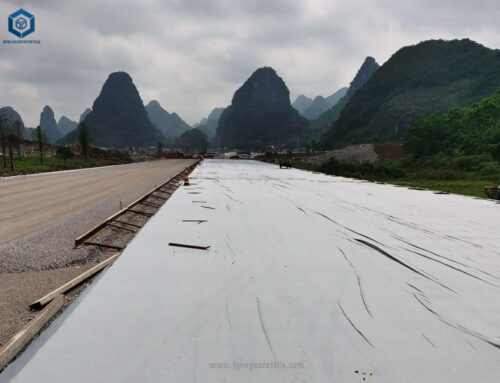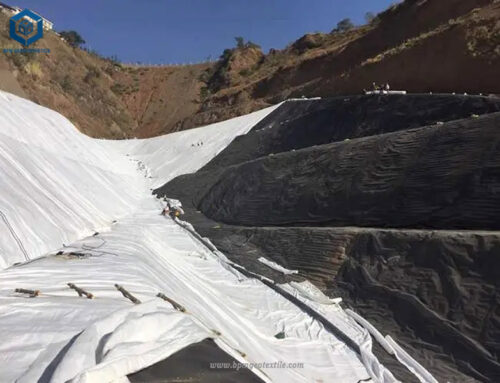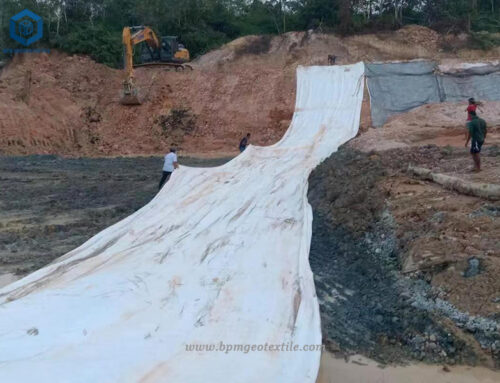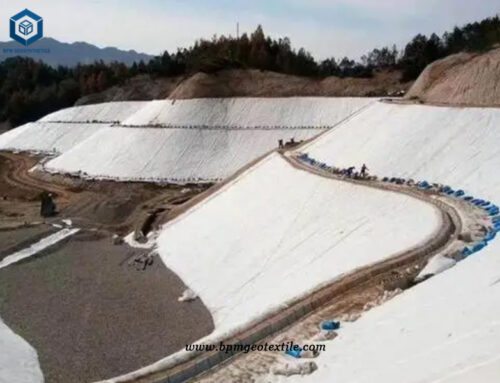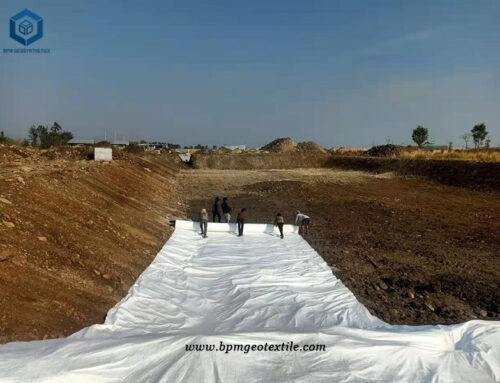Geotextile fabric sandbag, made from durable geotextile fabric, is used in hydraulic and geotechnical engineering, erosion control, and facility protection. Geotextile sandbag is robust and versatile, serving in various applications as temporary or permanent structures. The sizes and shapes of these sandbags can be customized to suit specific project requirements, ensuring they fulfill their intended purpose effectively. Whether it’s for erosion control, forming protective barriers, or creating structures in hydraulic engineering, geotextile fabric sandbags provide a reliable and adaptable solution.
1. What Is Geotextile Fabric Bag?
A geotextile fabric bag, also referred to as a geotextile sand bag, is a construction element typically made from non-woven geotextile material. These bags are filled on-site with sand or grout and are commonly used in various construction applications such as groyne construction, perched beaches, and offshore breakwaters. By filling the geotextile bags with local materials, the need for expensive materials, transportation, and installation is reduced. The bags can be stacked to quickly and easily build barriers or support systems.
Geotextile fabric bags come in different colors (black, white, tan), sizes, mechanical and hydraulic characteristics, seam types, and can include accessories like loops and caps to meet the requirements of different engineering projects. They are versatile and can be used for basal protection of marine structures, supporting sub-marine pipelines, dune reconstruction, and rapid repairs after storm events.
These bags are made of high tenacity polyester or polypropylene woven geotextile materials, providing resistance to UV degradation, high tensile strength, and long-term durability. They are produced in various sizes depending on the specific needs of the project. Overall, geotextile fabric bags offer a flexible and reliable solution for a range of construction and protection applications.
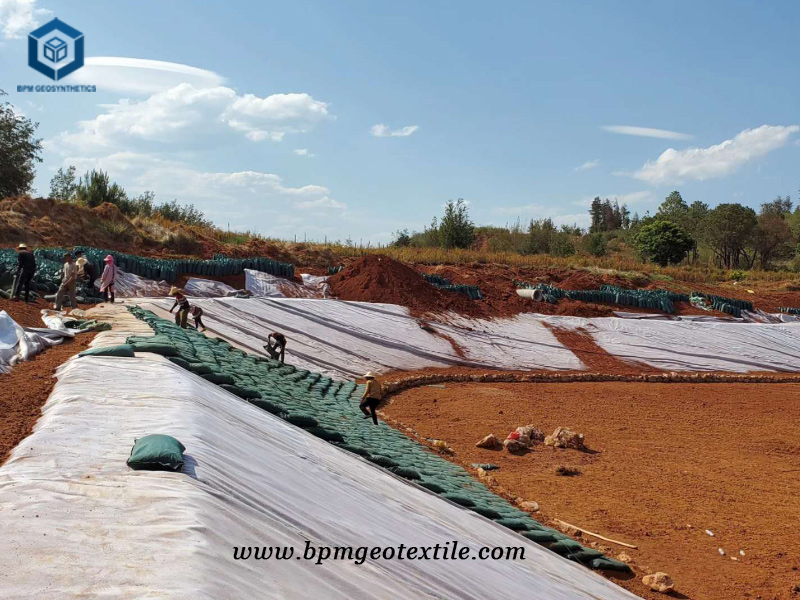
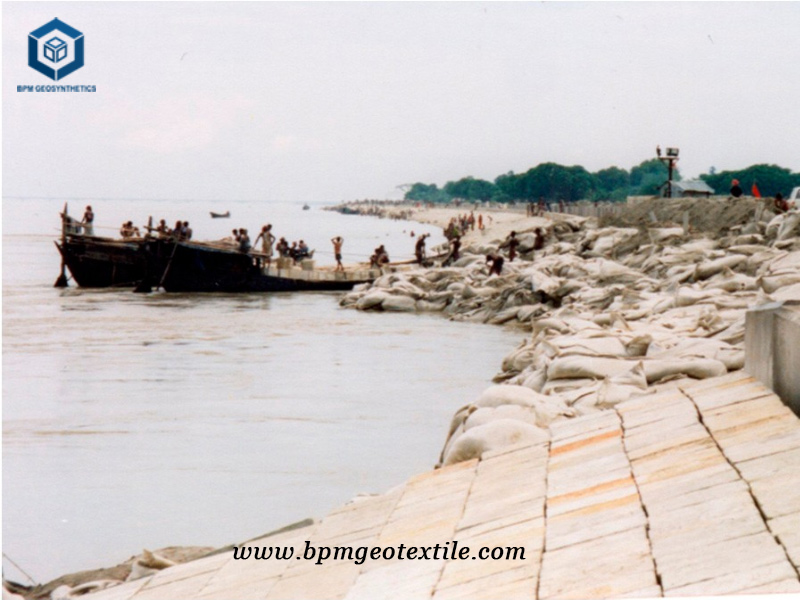
2. What Is Geotextile Fabric Bag Used for?
Geotextile fabric bags, also known as geotubes, serve a variety of purposes in numerous applications. They are commonly utilized for large-scale projects involving shoreline protection, erosion control, dewatering, and sludge removal. Geotextile fabric bags provide cost-effective solutions for containment, dewatering, desludging, and safeguarding coastlines.
2.1 Shoreline Protection
Geotextile fabric bags are employed to combat erosion along coastlines and riverbanks. They act as barriers, preventing the loss of soil and protecting vulnerable areas from the damaging effects of waves and currents. By stabilizing the shoreline, they help maintain the integrity of coastal ecosystems and infrastructure.
2.2 Erosion Control
Geotextile fabric bags are effective in controlling erosion in various environments. They can be used on slopes, embankments, or construction sites to prevent soil displacement and maintain the stability of the terrain. By reducing erosion, geotextile fabric bags safeguard landscapes and minimize environmental damage.
2.3 Dewatering
Geotextile fabric bags are utilized for dewatering projects, where they assist in separating water from solids. They are commonly employed in construction, mining, and wastewater treatment applications. The bags allow water to pass through while retaining sediment and solids, facilitating the removal of excess water and aiding in the consolidation of materials.
2.4 Sludge Removal
Geotextile fabric bags are an efficient solution for the removal of sludge from water bodies, storage basins, or industrial facilities. The bags are filled with sludge or sediment, and the water is gradually drained out, leaving behind dewatered solids that can be easily disposed of or further processed.
Geotextile fabric bags offer versatility, affordability, and ease of use in various civil engineering and environmental projects. Their applications range from protecting coastlines to controlling erosion, dewatering operations, and facilitating sludge removal. By employing geotextile fabric bags, these projects can be efficiently executed, providing effective solutions for containment, dewatering, and erosion control needs.
3. What Are Benefits of Geotextile Fabric Bag For Riverbank Protection?
Geotextile fabric bags offer several benefits for riverbank protection:
3.1 Excellent Physical and Chemical Properties
Geotextile fabric bags are made of non-woven geotextile material, typically polypropylene, which provides high strength and stability. They are resistant to UV degradation, chemical substances in the soil, and erosion from factors like insects, acid, alkali, and salt. The specially formulated material ensures long-term durability, non-degradability, and resistance to qualitative change or decay.
3.2 Long Lifespan
Geotextile fabric bags have a long engineering strength life. Accelerated experiments have shown that the system’s polypropylene material can exceed 120 years of life when subjected to pressure and maintain ecological bag installation specifications. With full coverage, the lifespan can extend beyond 200 years. This longevity ensures sustainable riverbank protection and reduces the need for frequent replacements.
3.3 Compatibility with Vegetation
Geotextile fabric bags promote plant growth and vegetation greening. They are permeable to water, allowing proper drainage, while being impermeable to soil, preventing erosion. The bags create a stable structure that integrates with the developing root system of vegetation, ensuring the artificial slope and natural slope remain intact and resilient. Over time, the vegetation’s root system strengthens, enhancing slope stability and creating a natural, living, and permanent ecological project.
3.4 Environmentally Friendl
Geotextile fabric bags contribute to environmental protection. They are non-toxic, non-combustible, and resistant to microbial decomposition. The bags support vegetation growth, promoting the greening of the riverbank and fostering a harmonious ecosystem. Additionally, their long lifespan reduces the environmental impact associated with frequent replacements.
In summary, geotextile fabric bags provide riverbank protection with their excellent physical and chemical properties, long lifespan, compatibility with vegetation, and environmental advantages. They offer a sustainable solution for maintaining stable and resilient riverbanks while promoting ecological balance.
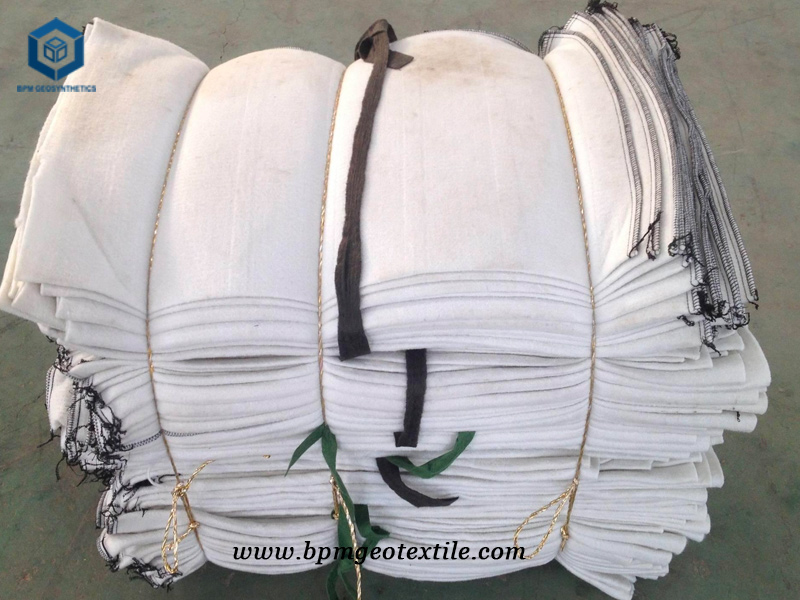
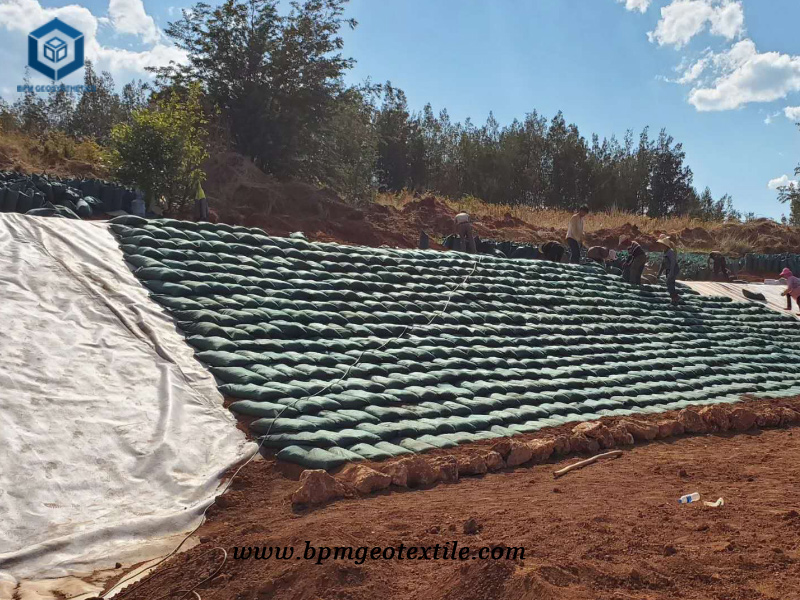
4. Case Study of Geotextile Fabric Bag for Riverbank Protection in Bangladesh
The Brahmaputra-Jamuna River flows across Assam into the large Bangladesh drainage basin, formed by alluvial deposits composed primarily of silt, sand and a little clay. These mostly loosely compacted deposits contain a relatively high concentration of mica flakes. In Bangladesh, the Brahmaputra River, also called Lower Brahmaputra River or Jamuna River, forms a large unstable braiding river with two, up to a maximum of ten parallel channels and a certain hierarchy regarding their size and extremely high suspended sediment transport during monsoon floods, just as stated in reports of the River Survey Project, project 24 of the Bangladesh Flood Action Plan (FAP) coordinated by the World Bank. This braiding river follows a natural path since the avulsion about 200 years ago when an extreme flood after an earthquake in Assam caused the Brahmaputra River to abandon its old course now called Old Brahmaputra River. The Lower Brahmaputra-Jamuna River has followed its natural course without limitations by river training structures or bank stabilization measures until the 1930s. So every year, geotextile fabric bag is used to reinforce both banks of the river.
The Mengxian River governance project is small in scale and cannot control the river. Now the banks of the Ganges of the Jana River are seriously damaged. Every year, a large number of cultivated land, transportation and facilities along the banks of the river are damaged. Everyone has their own budget during the rainy season. The growth of water and the rapid erosion of everyone’s water flow, and serious soil erosion every year. Geotextile fabric bag is a kind of high-resistance material, anti-freeze-thaw resistance, acid and alkali resistance, high molecular synthetic polymer material, is a new type of strong special material, has anti-ultraviolet, acid and alkali resistance, corrosion resistance, freeze-thaw resistance, can reach 50 years The above is not simple, it is truly zero pollution, with high strength, no water absorption, no damage to the bag, no deformation of the bag, no protection from pollution, and the rapid rush of the audience can also have 40 years of rivers, very suitable for this special way.
5. Specifications of Geotextile Fabric Bag for Riverbank Protection in Bangladesh
- Total Geotextile Bag Quantity- 5,000,000 Pieces
- Geotextile Weight- 600gsm
- Size-1200mm*900mm
6. Summary
BPM geotextile bags are favored by customers due to their structural and physical properties. They are now widely used in infrastructure construction such as highways, railways, water conservancy, water transportation, airports, and environmental protection, etc. This riverbank protection project of the Jamuna Riverbank in Bangladesh is a local bidding project. By participating in this bidding project, our application solution for geotextile bag has become more mature. Professionalism and service capabilities are constantly being strengthened. We look forward to solving your problems with our best quality and complete solutions, and creating brilliance together with BPM Geotextile.

